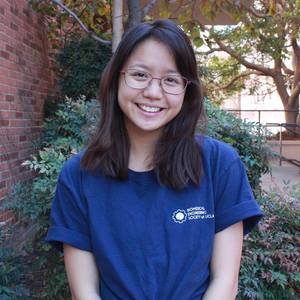Introduction:
In recent years, the growing hype around Asian breads from places like 85 Degrees or Sunmerry has been fueled by the novelty flavors that they sell. A big part of the growing fondness for these breads, in my opinion, is that they have such a different mouthfeel than classic American bread. The meaty texture of supermarket bread starkly contrasts the delicate and chewy bite of these breads from Asian bakeries. The secret? Tangzhong.
Many bread recipes from Asia utilize something called “tang zhong”, or “water roux” to achieve this special bread texture. TangZhong is a Japanese technique that involves cooking a mixture of flour and water to create a slurry that will be later added to the bread dough. A slurry is typically a mixture of equal parts of flour and water used in thickening soups or stews. By precooking some of the flour, the gluten in the flour is allowed to stretch and develop, giving it longer and more elastic strands. In soups, this development and cooking of gluten helps to thicken the broth by trapping more moisture within the gluten strands, preventing the liquid from freely moving around. Similarly in bread, the addition of our tangzhong slurry increases the amount of water the final bread dough is able to absorb, giving the bread the final softer texture since it is harder to dry out the dough during the baking process.
It’s beneficial to trap more water in the dough, since the yeast becomes more activated. Most commercial yeasts that we buy are dried active yeast, and usually, it’s recommended to “soak” the yeast in a bit of warm water to allow it to reactivate from its dormant state. Likewise, by incorporating more water into the dough, it gives you an extra chance to activate yeast that may not have been woken up during the soaking stage.

At home, my mom got into toast-making over the last few months. She really enjoyed making Hokkaido-Style Milk Toast: tangzhong was a critical part in providing the silky strands of gluten that made this toast so delicious. She often made her tangzhong in batches–after you combine the tangzhong with other bread dough ingredients, you can store the dough in the freezer for a few weeks to inhibit the development of yeast. When you want to make more bread, just thaw the dough to room temperature on the counter to prove (pro-tip!).
Because of this, I was recently inspired to try my own hand at making bread with tangzhong. My previous attempts at making bread usually flopped. The bread would turn out very dense because I would overwork the dough. By overworking the dough, it was easy for the liquid content of the bread to escape, creating a dry environment that the yeast did not favor. Thus, the bread didn’t rise very well. To test out this dry dough pitfall, I decided to try using King Arthur Flour’s recipe of Japanese Milk Bread Rolls, which incorporated a small amount of tangzhong.

Observations During the Process:
It’s really easy to overcook the slurry if you use a pan that has a base that is too big–you’ll end up evaporating off most of the water content that you want to keep trapped in the slurry. The mixture should have a texture of sticky mochi or a very thick and sticky curd. Adding the tangzhong definitely gave the dough a springier texture after its first hour of proofing, a result of retaining the liquids better than a classic bread recipe, even if the dough didn’t double in size.
As my friends and I were shaping the dough for our second proof, the dough had longer strands of gluten running throughout, and the size increase in proofing was very noticeable during the second round. Yet after baking it, our bread still came out denser than expected. My guess is that the yeast didn’t like the cold weather (the temperature was way below the optimal yeast activity range of 95 to 115 degrees Fahrenheit) so the dough was not able to rise completely. Additionally, we may have accidentally punched out some air when we were trying to reshape the dough before its second prove. However, despite the bread turning out denser than I would’ve liked, I was pretty happy that there was a distinct chewiness to the bread that can only be obtained through the tangzhong method.

While it seems that my streak of breadmaking has yet to turn, I believe that the addition of tangzhong did help significantly to alleviate the qualities of rock-hard bread I usually get from using more Western recipes.


